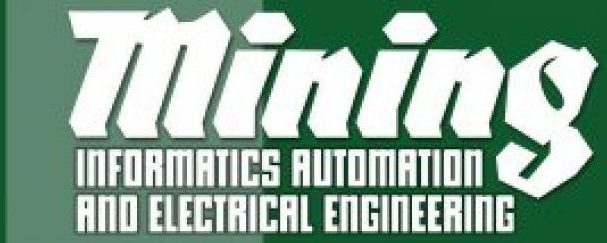KRZYSZTOF KRASUCKI, TOMASZ KUDŁACIK, KRZYSZTOF AUGUSTYNIAK
RUFUS 3G LOAD BEARING CAPACITY MONITORING SYSTEM FOR ROVIDING DIAGNOSTICS FOR POWERED ROOF SUPPORT OPERATIONS
The Ziemowit part of the Piast-Ziemowit mine uses an active and passive load bearing capacity system for its powered roof support section, which allows for diagnostics, the selection of initial load bearing capacity, and control of the roof’s impact on the longwall support.
The diagnosis of powered roof support section operations by means of the load bearing capacity monitoring system shortens the search for faults. In underground conditions, it is difficult to diagnose failures related to the operation of the powered support, however, the mine is able to detect any irregularity on the mine’s surface by qualified energomechanical dispatchers. The need to ensure contact between the support and the rock mass at the stage of operation is the basic criterion for the functioning of the works performed. Controlling the situation in the longwall related to the limited amount of falling roof rocks is an advantage of the proper use of the load bearing capacity monitoring system by employees.
https://doi.org/10.7494/miag.2021.2.546.7
KRZYSZTOF ZAGÓRSKI, DANIEL STOMPOR
A MANUAL WINCH PROJECT WITH A TWO WAY RATCHET MECHANISM
The article describes a solution to an engineering problem concerning the development of a design of a manual winch for off–road vehicle users. The aim of the design is to provide the possibility of extracting an off-road vehicle which is not equipped with an electric winch in the event it becomes stuck in mud or sand. The concept was based on a review of available solutions on the market and an analysis of their advantages and disadvantages. The design was based on calculations performed in accordance with the literature recommendations and FEM strength analyses carried out on a model created using Autodesk Inventor Professional 2020. The developed device is able to provide a pulling force of over 50 kN with an unladen weight of 35 kg, and also provides the possibility of controlled lowering of the load.
https://doi.org/10.7494/miag.2021.2.546.33
EDWARD MICHLOWICZ JERZY WOJCIECHOWSKI
ENERGY CONSUMPTION ANALYSIS OF THE MAIN DEWATERING PUMPS IN UNDERGROUND MINES
Mine dewatering is one of the main tasks and problems in the mining sector which do not affect output directly but are necessary for correct mine operations. The main dewatering pumps are located at various levels, but the pumping head is always a few hundred metres underground. The number and operating time of the pumps depends on the water inflow and are specified in the applicable regulations. Due to the capacity and required head, the pow-er demand may well be in excess of 1 MW. Consequently, the correct use of main dewatering pumps, at low energy consumption, is a basic condition of limiting water pumping costs. The analysed pumping station is located at level 500, is equipped with ten Q = 500 m3/h (0.139 m3/s) OW-250/8 pumps. The operating time of most pumps exceeds 20 000 h and the energy consumption is from 2.17 to 2.67 kWh/m3 of pumped water. The analysis results and the energy consumption ratios have been compared with the data for new pumps which operate at data sheet parameters (efficiency). This was the basis to evaluate the impact of exceeding the time between repairs on operating parameters and the increase in the operating costs of the main dewatering pumps.
https://doi.org/10.7494/miag.2021.2.546.47
TOMASZ BUDNIOK, RAFAŁ KONSEK, BERNARD KRAKOWCZYK, ANDRZEJ TOR, WOJCIECH ZASADNI, LESZEK ŻYREK
AN INNOVATIVE CA-190 MONORAIL BATTERY LOCOMOTIVE POWERED BY A VOLTER LITHIUM BATTERY
The article describes the CA-190 battery locomotive powered by a VOLTER lithium battery, intended for the suspended transport of machine parts, materials and people.
The CA-190 battery locomotive with a VOLTER lithium battery is an innovative construction tailored to the current development trends in transport in the global mining industry. Having its own power source eliminates the use of electrical power cables or hydraulic hoses which typically limit the use of locomotives. The method of charging the battery directly from the mine’s power grid with a three-phase voltage of 500 V, 1000 V during standstill is an innovative solution. The use of batteries as a source of energy re-duces the negative impact on the mine environment due to the elimination of exhaust emissions and significant reduction of noise and heat. The implementation of CA-190 locomotives results in increased efficiency of works and improves the safety of personnel and work ergonomics.

